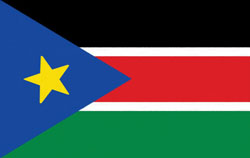South Sudan News & Current Events


Historic Vote in Southern Sudan
In a historic seven-day secessionist referendum that began in southern Sudan on January 9, 2011, 98.8% of voters chose independence from the north. The referendum was a provision of the 2005 Comprehensive Peace Agreement, which ended a 22-year civil war that killed 2.5 million people and displaced 4 million. President Bashir accepted the results and said he would not seek reelection when his term expires in 2015.
The Bush administration negotiated the 2005 Comprehensive Peace Agreement, which in addition to setting the date of the referendum also called for people in the contested region of Abyei to participate in the vote. That vote, however, has been delayed because a decision on what constitutes a resident of Abyei has not been reached. Tribal leaders in the region have made it clear that their loyalty lies with the south, but there has not been a date set for a vote in Abyei. Any declaration of affiliation with the south by Abyei could trigger an attack from the north. Abyei sits between northern and southern Sudan and has historically served as a bridge between the two. Since voting began in southern Sudan, at least 23 people have died in Abyei, confirming speculation that the region continues to be a matter of contention.
On July 9, 2011, the Republic of South Sudan declared its independence and became Africa's 54th state. Thousands celebrated in the streets of South Sudan's capital, Juba. Salva Kiir, South Sudan's president, signed the interim constitution. However, even as South Sudan celebrated its independence, Abyei's uncertainty was only one obstacle that awaits the fledgling state. South Sudan becomes one of the poorest countries in the world with half of the population living on less than $1 per day and an adult literacy rate of less than 25%. South Sudan also needs to establish a new government and constitution.







